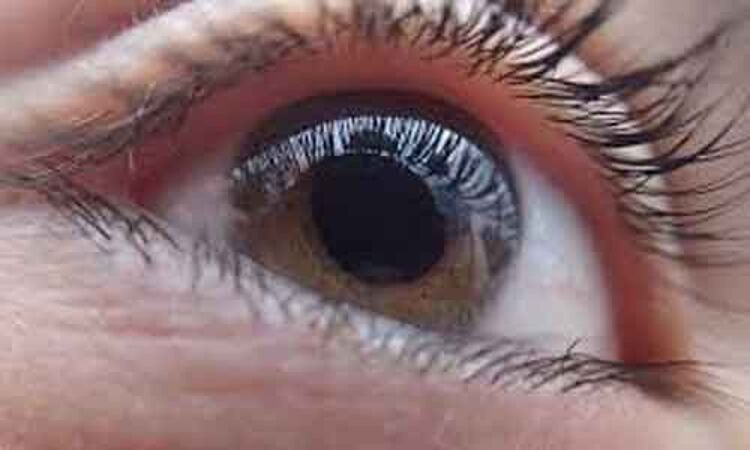- Home
- Medical news & Guidelines
- Anesthesiology
- Cardiology and CTVS
- Critical Care
- Dentistry
- Dermatology
- Diabetes and Endocrinology
- ENT
- Gastroenterology
- Medicine
- Nephrology
- Neurology
- Obstretics-Gynaecology
- Oncology
- Ophthalmology
- Orthopaedics
- Pediatrics-Neonatology
- Psychiatry
- Pulmonology
- Radiology
- Surgery
- Urology
- Laboratory Medicine
- Diet
- Nursing
- Paramedical
- Physiotherapy
- Health news
- Fact Check
- Bone Health Fact Check
- Brain Health Fact Check
- Cancer Related Fact Check
- Child Care Fact Check
- Dental and oral health fact check
- Diabetes and metabolic health fact check
- Diet and Nutrition Fact Check
- Eye and ENT Care Fact Check
- Fitness fact check
- Gut health fact check
- Heart health fact check
- Kidney health fact check
- Medical education fact check
- Men's health fact check
- Respiratory fact check
- Skin and hair care fact check
- Vaccine and Immunization fact check
- Women's health fact check
- AYUSH
- State News
- Andaman and Nicobar Islands
- Andhra Pradesh
- Arunachal Pradesh
- Assam
- Bihar
- Chandigarh
- Chattisgarh
- Dadra and Nagar Haveli
- Daman and Diu
- Delhi
- Goa
- Gujarat
- Haryana
- Himachal Pradesh
- Jammu & Kashmir
- Jharkhand
- Karnataka
- Kerala
- Ladakh
- Lakshadweep
- Madhya Pradesh
- Maharashtra
- Manipur
- Meghalaya
- Mizoram
- Nagaland
- Odisha
- Puducherry
- Punjab
- Rajasthan
- Sikkim
- Tamil Nadu
- Telangana
- Tripura
- Uttar Pradesh
- Uttrakhand
- West Bengal
- Medical Education
- Industry
Diurnal IOP fluctuations by self tonometry predicts response to therapy in glaucoma: Study

Australia: A recent study highlights that diurnal IOP fluctuations obtained using self-tonometry more accurately reflect IOP responses to therapy. The findings, published in the journal Optometry and Vision Science, may impact clinical decision-making based on target IOP criteria in patients on topical therapy.
"IOP fluctuation with self-tonometry was more consistent in for evaluating target IOP, reflecting its importance in ascertaining true IOP response to topical therapies," wrote the authors.
Prior to this study, it was known that for monitoring patients with open-angle glaucoma and ocular hypertension, assessment of treatment efficacy via comparison with a target IOP (intraocular pressure) is fundamental. Janelle BOptom Tong, University of New South Wales, Sydney, New South Wales, Australia, and colleagues investigated fluctuations in diurnal IOP measurements in patients with open-angle glaucoma and ocular hypertension treated with latanoprost 0.005% and timolol 0.25% in a crossover treatment trial.
14 participants performed self-tonometry with iCare HOME 4 times daily for (1) 1 week using latanoprost, (2) 4 weeks using no medications, and (3) 2 weeks using timolol. The researchers then compared daily peak IOPs, IOP fluctuations, and mean IOPs from different treatments on an individual basis. By comparing mean percentage IOP reductions with latanoprost and timolol across participants, treatment efficacy between medications was assessed. In addition, the researchers also investigated effects of age, years since commencing latanoprost, sex, and diagnosis, and comapred peak IOP times with assess impacts on diurnal profiles.
The researchers found that between individuals, IOP responses ranged from reductions in peak IOPs, IOP fluctuations, and mean IOPs on both medications had no change in any parameter and medication. IOP fluctuations showed greater mean percentage reductions than did peak and mean IOPs (χ2 = 16.51, P = .002). There were significant associations between years since commencing latanoprost and peak and mean IOP responses on timolol (r = 0.69, P = .007), and sex and relative reductions in IOP fluctuations on both medications (P = .03). There were no differences in peak IOP times between treatment conditions.
Key findings of the study include:
- Between individuals, IOP responses ranged from reductions in peak IOPs, IOP fluctuations, and mean IOPs on both medications to no change in any parameter and medication.
- IOP fluctuations showed greater mean percentage reductions than did peak and mean IOPs (2 = 16.51).
- There were significant associations between years since commencing latanoprost and peak and mean IOP responses on timolol, and sex and relative reductions in IOP fluctuations on both medications.
- There were no differences in peak IOP times between treatment conditions.
IOP fluctuation with self-tonometry was more consistent in evaluating target IOP despite variability in IOP responses to latanoprost and timolol. This reflects the importance of target IOP criteria in ascertaining true IOP response to topical therapies.
Reference:
Tong, Janelle BOptom, BSci1,2; Huang, Jessie PhD, BOptom1,2; Kalloniatis, Michael PhD, MScOptom, FAAO1,2; Coroneo, Minas MBBS, MSc3; Zangerl, Barbara PhD, DVM, RN1,2∗ Clinical Trial: Diurnal IOP Fluctuations in Glaucoma Using Latanoprost and Timolol with Self-Tonometry, Optometry and Vision Science: August 2021 - Volume 98 - Issue 8 - p 901-913
doi: 10.1097/OPX.0000000000001751
Medical Dialogues consists of a team of passionate medical/scientific writers, led by doctors and healthcare researchers. Our team efforts to bring you updated and timely news about the important happenings of the medical and healthcare sector. Our editorial team can be reached at editorial@medicaldialogues.in.
Dr Kamal Kant Kohli-MBBS, DTCD- a chest specialist with more than 30 years of practice and a flair for writing clinical articles, Dr Kamal Kant Kohli joined Medical Dialogues as a Chief Editor of Medical News. Besides writing articles, as an editor, he proofreads and verifies all the medical content published on Medical Dialogues including those coming from journals, studies,medical conferences,guidelines etc. Email: drkohli@medicaldialogues.in. Contact no. 011-43720751


